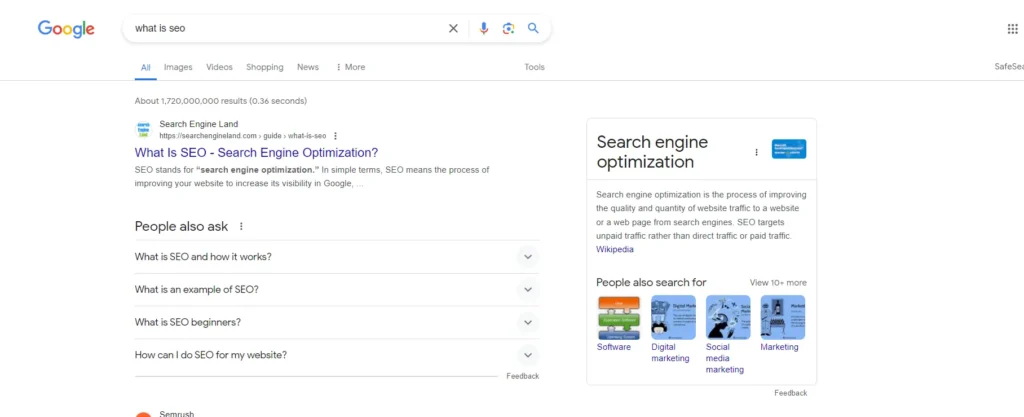In the vast digital landscape, Search Engine Optimization (SEO) stands as a beacon guiding businesses toward online visibility and success. Understanding the basics of SEO is essential for anyone looking to enhance their website’s visibility and attract organic traffic from search engines. Let’s delve into the fundamentals of SEO and explore how it can elevate your online presence.

What is SEO?
SEO is the practice of optimizing your website to improve its visibility in search engine results pages (SERPs). The ultimate goal of SEO is to increase organic (non-paid) traffic to your website by ranking higher for relevant search queries. Search engines like Google, Bing, and Yahoo use complex algorithms to determine the relevance and authority of web pages, making SEO a multifaceted discipline.

Key Components of SEO:
- On-Page SEO: On-page SEO focuses on optimizing individual web pages to improve their search engine rankings and attract relevant traffic. Key aspects of on-page SEO include:
- Keyword Research: Identifying relevant keywords that your target audience is searching for.
- Content Optimization: Creating high-quality, engaging content that incorporates target keywords naturally.
- Meta Tags: Optimizing meta titles, meta descriptions, and heading tags to improve click-through rates and search visibility.
- URL Structure: Creating clean, descriptive URLs that include target keywords.
- Off-Page SEO: Off-page SEO refers to activities conducted outside of your website to improve its authority and credibility in the eyes of search engines. Off-page SEO techniques include:
- Link Building: Acquiring backlinks from reputable websites to enhance your site’s authority and domain strength.
- Social Media Engagement: Engaging with your audience on social media platforms to amplify your content and attract inbound links.
- Online Reputation Management: Monitoring and managing your brand’s online reputation to build trust and credibility.
- Technical SEO: Technical SEO involves optimizing the technical aspects of your website to ensure search engine crawlers can index and understand your content effectively. Technical SEO considerations include:
- Website Speed: Optimizing page load times to improve user experience and search engine rankings.
- Mobile Friendliness: Ensuring your website is responsive and accessible on mobile devices, as mobile-friendliness is a crucial ranking factor.
- Site Structure: Creating a logical site structure with clear navigation and internal linking to facilitate crawling and indexing.
Why SEO Matters:
- Increased Visibility: Higher search engine rankings mean more visibility for your website, leading to increased organic traffic and brand exposure.
- Targeted Traffic: SEO allows you to target specific keywords and phrases relevant to your business, attracting users who are actively searching for products or services like yours.
- Cost-Effectiveness: Compared to traditional advertising methods, SEO offers a high return on investment (ROI) as it generates organic traffic without the ongoing costs of paid advertising.
- Credibility and Trust: Websites that rank highly in search results are perceived as more credible and trustworthy by users, enhancing your brand’s reputation.
- Competitive Advantage: By investing in SEO, you can outperform competitors in search engine rankings and capture market share in your industry.
In essence, SEO is a cornerstone of digital marketing that can drive sustainable growth and success for businesses of all sizes. By understanding and implementing the basics of SEO, you can position your website for long-term success in the competitive online landscape.



